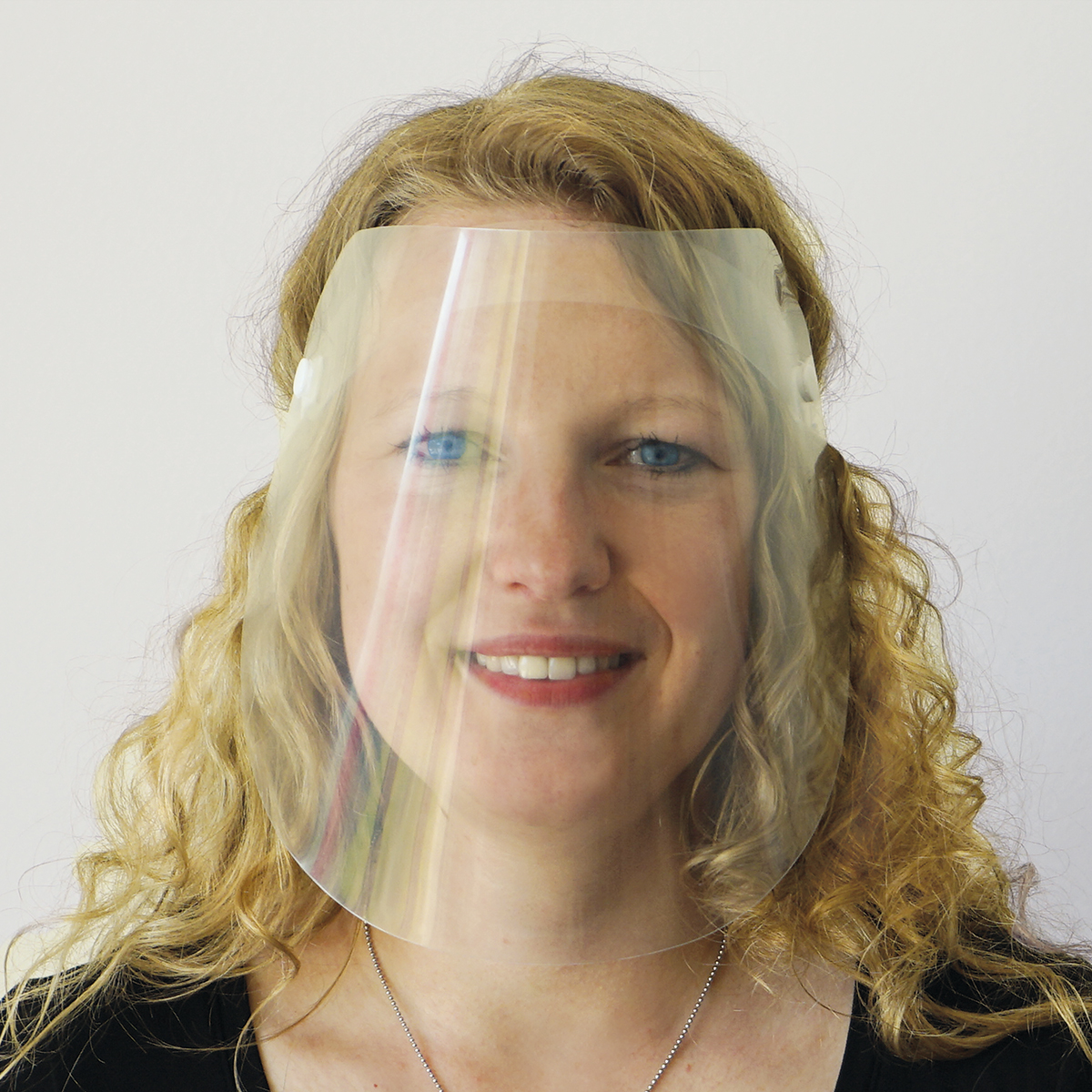Frohnradstraße 2
63768 Hösbach
Tel.+49 (0) 6021 62998-100
Fax +49 (0) 6021 62998-99
Overview of respiratory protection, mouth protection, makeshift mouth protection and mouth and nose masks
While respiratory and mouth protection has always been a daily issue in care professions, there has been an unprecedented demand for mouth masks worldwide since Covid-19. Below we have compiled the key facts, distinctions, and everything you need to know.
Click here, to go directly to the text.
Filter products

Face Shield - effective protection against viruses! Transmission of the coronavirus takes place mainly via droplet infection. When speaking, coughing and sneezing, these viruses are released correspondingly far into the air and allow the infection via the respiratory tract or even eyes. It is therefore helpful to ward off these droplets with a shield. This is particularly important if there is close physical contact - such as at the (dentist) doctor, in therapy, at the hairdresser or during other activities - and the safety distance cannot be granted. The face shield can of course also be worn in combination with mouth-nose masks. Our recommendation: Protect yourself, your family and your employees with this effective shield. Limited stock in the house soon - reserve and order now! Product details: Height: 22 cm Width 28,8 cm
Respirators with FFP certification
For a mouth covering to be designated and certified as a respirator, medical standards must be met. With the advent of Corona, the talk of FFP2 respirators comes up again and again. First of all, FFP stands for "particle-filtering half masks". Incidentally, the term comes from English and stands for "filtering face piece". FFP-certified respirators are available in three levels: FFP1, FFP2 and FFP3. Depending on the level, the total leakage and the protection factor change. FFP1 masks, for example, are used in workplaces with high dust exposure. They filter at least 80% of the particles up to a size of 0.6 micrometres in the air we breathe. However, viruses are so small that they can slip through the fabric. FFP2 masks are so finely meshed that they also block viruses, including covid-19 and noroviruses. The total leakage must not exceed 11%. Aerosols and hazardous dusts are also stopped. FFP3 masks offer the highest protection, but they fit so tightly against the skin that they are very difficult to wear for long periods. In principle, all particle-filtering half masks are intended for single use.
Mouth-nose protection
Mouth-nose protection is mainly used during operations, when treating open wounds or when in contact with immunocompromised patients. They are mainly used to protect patients from viruses, germs and bacteria from the practitioner and nursing staff. So, they mainly protect other people from infection, but also keep droplets out to a certain extent. Mouth-nose protection can be quickly put on with a few simple steps and is also intended as a disposable mask. This mouth-nose protection does not provide respiratory protection like the respirators above.
Face shields
Face shields cover the entire face and thus provide highly effective protection against viruses, especially in combination with FFP2 masks. For particularly critical environments such as hospitals with corona patients, face shields act as additional preventive barriers.
Temporary protective masks / mouth and nose masks made of fabric and other materials
The wearing of makeshift protective masks or mouth and nose masks is now recommended by many governments in the Corona crisis and is sometimes even necessary to go shopping or ride public transport. These mouth coverings do not require certification, but they do not safely keep out aerosols and viruses either. Wearing a makeshift mouthguard is nevertheless recommended because infected people use it to reduce the risk of infecting other people. Mouth and nose masks are often made of cotton and can be reused after a hygienic wash cycle of 60° or more, which is an advantage.
The correct use of respirators and mouth masks
- Wash your hands carefully before putting on and after taking off the mask.
- Always put on the mouthguard so that it fits as tightly as possible against the skin without wrinkles or holes
- It is important not to touch the mouthguard when wearing it, or if you do, to touch it only at the straps
- Please test in a safe environment before first use to ensure that the mask fits and seals properly and ensures easy breathing
- FFP masks are for single use only
- Once a mouth mask becomes soaked, it should be changed as soon as possible (having spare masks in your luggage is a good idea)
